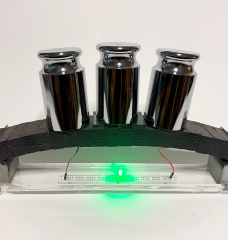
It is my pleasure to introduce Common Energy to the MIT community!
Common Energy is a company founded and led by MIT alumni that enables homeowners and renters to support clean energy directly, lower emissions in their community and save money, without the time or investment of on-site installation.
Common Energy has developed an energy platform that connects households to local clean energy projects through their utility. Clean energy from these projects displaces fossil fuels and appears as a credit on your utility bill, lowering your energy cost. Our platform has been made possible by new laws enacted in NY, MA, MD, IL and other states, often described as "shared renewables" or "community solar."
Unlike retail energy providers (or ESCOs) which use financial hedges to create near-term discounts in electricity prices (which are subsequently made up by future price increases), Common Energy offers clean energy at a contracted discount—typically 10%—to the prevailing electricity price. This ensures that our subscribers are always saving. Always.
Here's how it works:
(1) You sign up with Common Energy with your utility account and method of payment
(2) Common Energy notifies your utility that you would like to subscribe to a new clean energy project
(3) Clean energy from this project displaces fossil fuels, lowering emissions in your community
(4) This energy appears as a credit on your utility bill, lowering your energy cost
(5) Instead of receiving a bill from your utility, Common Energy provides you with a unified statement each month, showing (a) your original utility charges, (b) your savings and impact with Common Energy, and (c) your new, lower electricity cost. You simply pay a lower amount each month for clean energy.
There is no cost to subscribe to a project with Common Energy, and you can sign up in less than 5 minutes. Typical savings is $10-20 per month, but the real reason to get involved is the environmental impact: Each subscriber prevents approximately 8,000 pounds of carbon emissions each year. There is simply no single action an individual can take that has a greater positive impact on the environment in a matter of minutes.
So how does Common Energy make money? That's easy too. We are paid by developers to subscribe and manage their clean energy projects, similar to the way a property manager is paid to manage a building. This enables us to offer electricity to the public at a discount, with no upfront cost and no hidden fees of any kind.
There are two profound benefits to deploying solar energy in this manner. First, by separating asset installation from consumer adoption, we are able to attack the latter with software, dramatically accelerating clean energy adoption. Second, because there is no on-site installation, renters, condominium owners and homeowners whose roofs are not suitable for solar panels all qualify, dramatically expanding the addressable market in both size and socioeconomic reach.
At present, Common Energy manages approximately 50% of the connected community solar projects in New York. In addition, we recently received two awards from NY State to manage clean energy projects for low income families (Google: "NYSERDA Common Energy"). We are now expanding to Maryland, Massachusetts and Illinois, starting with the MIT community.
As a small and nimble company we are able to set up neighborhood and other local impact programs very quickly. We have partnered with publicly traded companies valued over $50 billion, and neighborhood associations as small as twenty people.
Join us and make a positive impact today, and contact us at hello@commonenergy.us to learn how to create a clean energy savings program with your community, school, or employer!
Richard ('97)
www.commonenergy.us






